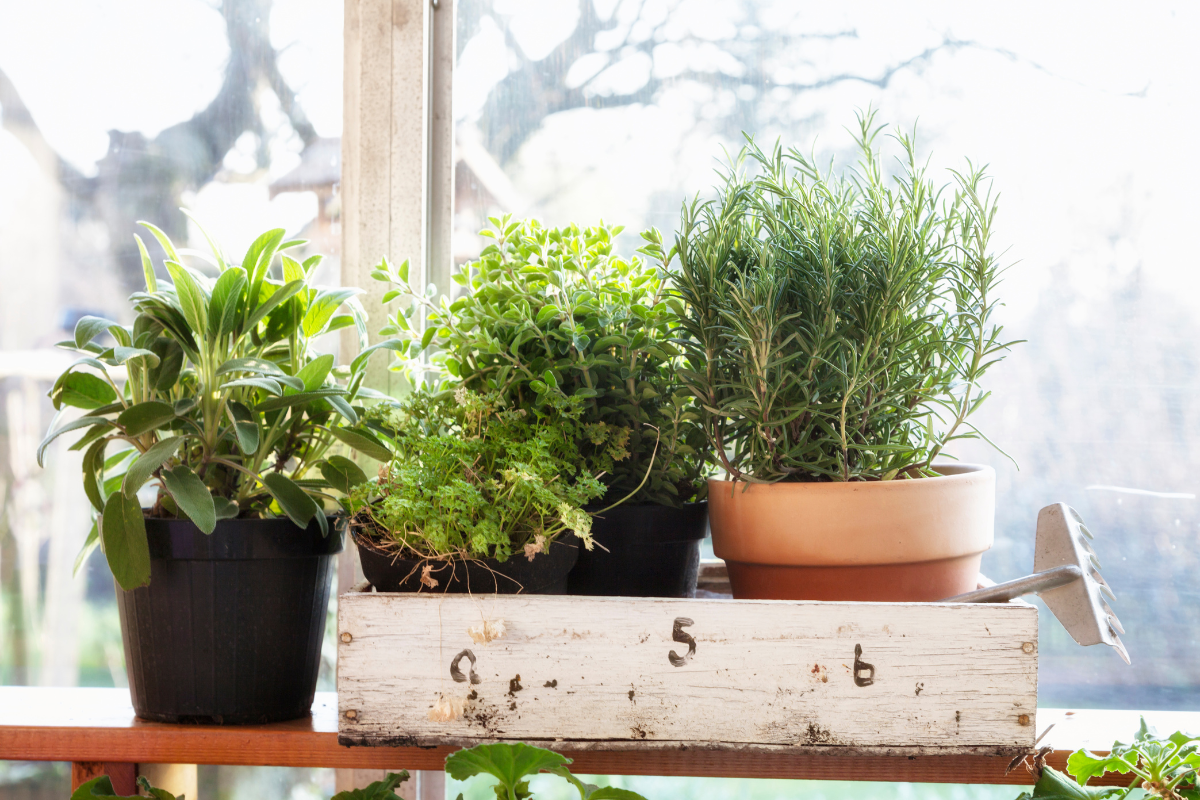Self-reliance and providing your own food with a vegetable garden seem to go hand in hand, but did you know that growing herbs is also important? By growing your own herbs, you can eliminate the pesticides and chemicals that come with store-bought herbs.
From culinary herbs for cooking to medicinal herbs for your home remedies and first-aid kits, herbs provide a plethora of opportunities of adding flavor to your meals and increase your health at the same time.
In this post, I will teach you how to start growing herbs. You will learn some general rules and even some tips and tricks that will make you feel comfortable and confident enough to start growing fresh herbs on your property.
You will see with the right garden soil, a little maintenance, and the knowledge of some basic principles you can grow some of the best herbs in your garden beds even with limited space.
The Value of Growing Herbs
Herbs have been used for centuries all over the world. They have been used for dying cloth, healing the sick, and perfuming the body and home.
Today they are used as a basis in herbal medicine, in perfumes and dyes, and to flavor our food.
Many herbs invite pollinators to the garden with their varied textures, aromas, and heights. The beauty of an herb garden can be breathtaking, especially when clustered in backyard gardens.
What is an Herb?
An herb is considered a soft-stemmed, leafy herbaceous plant. Herbaceous plants are either annual, meaning they die back to the ground each year, biennial living two years, or perennial, living many years.
Herbs have very distinctive essential oils in the tissues of the plant. These oils are what give the plant its aroma or fragrance.
Some herbs are considered trees or shrubs and have woody stems, such as witch hazel and the true tea plant.
A Word on Hardiness Zones
Herbs, just like vegetables, have a hardiness rating as set forth by the Royal Horticultural Society (RHS). Knowing the hardiness rating of each herb will help you decide if it is a good choice for you.
Which Herbs Should You Grow?
My answer to that question is simple... grow what you love and will use. Start with the fresh herbs you use regularly now and expand from there.
There are no rules about how many kinds of herbs there should be in a herb garden. The sky is the limit. Let's learn more about growing herbs.
Start with a Garden Spot
Most herbs grow in typical garden soil as long as it has good drainage available. Most herbs also grow best in full sun. That means they thrive in six or more hours of direct sun each day.
Now that does not mean if your property gets less sun that you can't start an herb garden. It simply means you may have to choose herbs that match your garden's light conditions.
Most herbs will not tolerate very windy conditions. This is easily solved by placing them beside some form of shelter such as the side of your home.
Placing herbs next to a protected shelter like the side of your home or a wall provides a microclimate that protects those herb plants. This is helpful information for colder climates.
A Bit About Having the Right Soil for Growing Herbs
Regular garden soil is not recommended for growing herbs, especially aromatic ones. This is because it does not allow the correct soil drainage.
Instead, opt for a more organic potting mix which allows for good drainage. Especially if you choose to grow herbs in containers.
Remember the lighter the soil the better the drainage. The ideal soil is an even mixture of sand, loam, and clay with a good dose of organic matter. The pH level should be between 6 and 7.5
If planting a new herb garden in the ground, dig it over thoroughly to remove weeds, grass, and any stones. Cover the area with a very thick layer of well-rotted organic matter.
Mix the organic matter into the soil with a garden rake and level it. Just remember to make sure the soil underneath is worthy of herbs as explained above
.
I have mostly sand here in Florida so I "scratch up" the surface then add the soil mix on the top. I layer that with organic matter and then mix it all together.
Depending on how much I have to add to the top of the ground will determine if I add sides like a raised bed. This prevents the good stuff from being swept away in our rainstorms.
If you are going to be herb gardening in a raised bed, just add the soil and organic mixture, such as your own compost, to your plot.
Choosing Pots for Container Gardening
Herbs thrive in terra cotta pots. Because these types of pots are only fired once, they not only absorb moisture well, but they drain well also.
The cheaper terra cotta pots are great in smaller sizes (under 10" in diameter) They are great pots to sow seeds in, start new plants from cuttings, and small growing herb plants.
The larger pots (12" and wider) are intended for more permanent plantings or to be used as a featured specimen in the garden. These pots age well and last a long time. So if you are new to herb gardening, terra cotta pots are a good option.
Other types of herb pots are available on the market. From earthenware and glazed ceramic pots to concrete and cast stone, the options are limitless.
Just make sure to choose a good size that will accommodate the growth of your plant and make sure it has drainage holes so it can drain well. Again, always use the best soil possible.
Choosing Your Herb Plants
Every new gardener wants to run out and buy a ton of seeds and start planting. But wait. When it comes to herbs, seeds could be tricky to start with and you want to start herb gardening on a positive foot right?
So before you jump in the seed ordering catalogs, find a local nursery or gardening center that sells herbs and start there.
You should know that perennial herbs are some of the easiest herbs to grow. They don't require a lot of maintenance and they are not prone to the many troubles that affect the faster-growing annuals.
Most perennial herbs retain their leaves year-round. Some will die back in the fall or winter depending on the temperature but will return in the spring with all new growth. These perennial plants are where you want to start.
Easy Perennial herb plants to start with:
- Oregano
- Parsley
- Creeping Thyme
- Lemon Verbena
- Sweet Marjoram
- Lemon Balm
- Fennel
- Sage
- Mint
- Lavender
- Roman Chamomile
- Chives (regular or garlic)
- Cilantro (coriander)
- Rosemary
You don't have to rush out and buy all of the above herbs. Simply choose a couple you normally use and start with those first. You can always expand your herb garden later on. Are you ready to start growing herbs now?
Next Steps for Growing Herbs
In my Ebook, Beginning Herb Gardening, I teach you almost everything you need to know about the 14 starter herbs above. From how to plant them, their care, harvesting, and even herbal uses.
For more information on self-reliant gardening read Self-Reliant Gardening: An Essential Guide.


